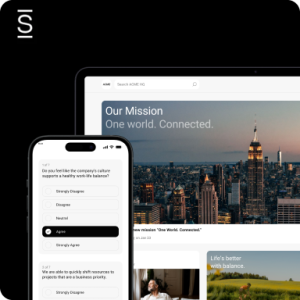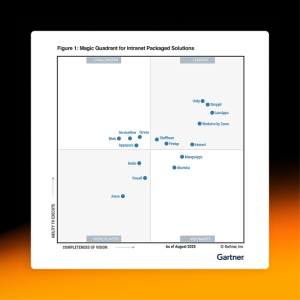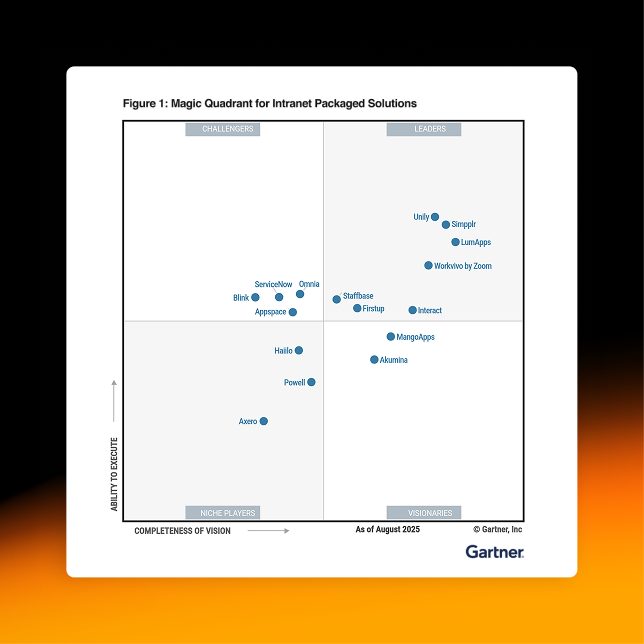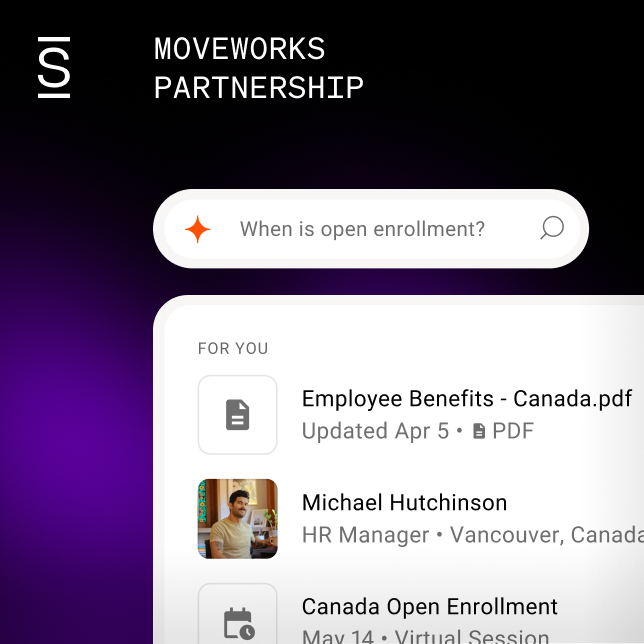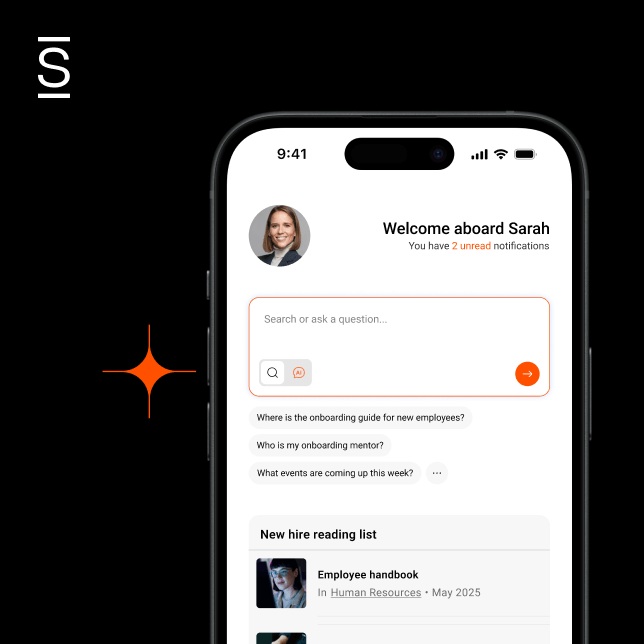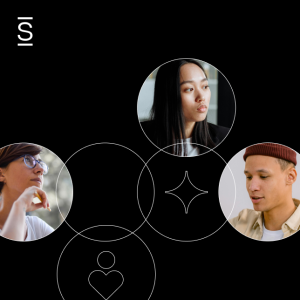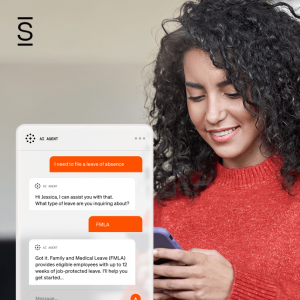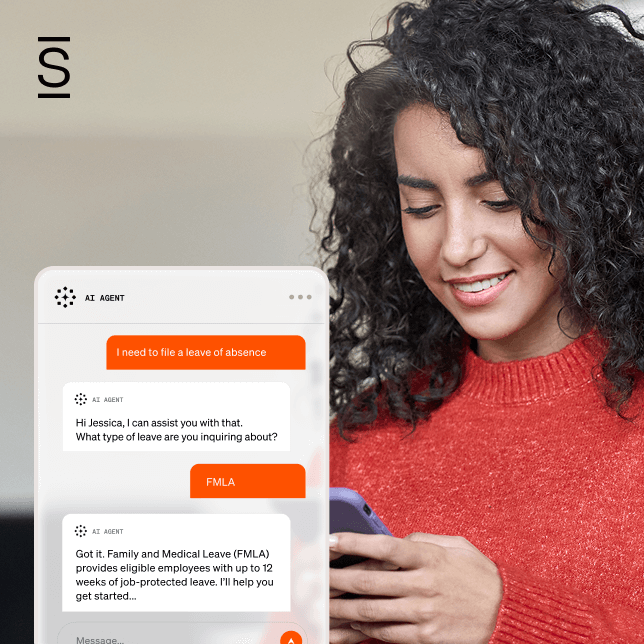If you’re an internal communicator experimenting with generative AI (like ChatGPT and others), you’re not only an early adopter but are also likely taking a lot of questions from your team about applied artificial intelligence (AI) in the context of communications strategy.
Notwithstanding all the doomsday predictions, AI has many useful applications in communications strategy. But there are real issues to navigate surrounding content veracity, data security and ethical use, among others.
We had a chance to catch up with Carolyn Clark, VP of Employee Experience Strategy and Transformation at Simpplr, and Shaun Randol, Editor-in-Chief of Digital Publications at Lam Research and founder of Mister Editorial. We talked about life after ChatGPT, how the communications landscape might look in the future, and how AI could influence the employee experience.
Stemming from personal experience and extensive research, Carolyn and Shaun offer strategies, use-cases and many practical tips for internal comms pros on how to succeed with this new technology and maximize its potential.
Applied artificial intelligence: Using AI in communications strategy
- The case for AI for internal communications
- The dark side of AI
- Will AI replace you?
- Limitations of AI in communications
Listen to the full podcast here.
The case for AI for internal comms
Shaun sees communications pros as often too slow to adopt new technologies. This is especially true for the ever-underfunded internal comms function— but tech is advancing on the fringes, with those who are curious and ambitious. Individual comms pros are experimenting with the application of artificial intelligence right now, but it’s likely their teams don’t even know that they’re using it. And that’s a shame.
AI has many useful applications in communications strategy.
Use AI for image generation
For teams that are experimenting with AI in communications, image generation has been the safest place to start, and probably the most fun. Check out some of the best AI image generators.
Fine-tune AI prompts for text generation
If you’re just getting started, think of generative AI tools as virtual assistants that can engage in conversations with you. They understand your questions, statements and prompts and respond with text that’s contextually appropriate — but it matters what you say in a prompt.
Think of generative AI tools as virtual assistants that can engage in conversations with you.
Carolyn has been tinkering with queries ever since she started playing with AI. She’s used AI for everything from composing a script from a long-form written piece to communicating with different departments using hyper-specific personas to direct the content. Her best advice? Really take a minute to think before you submit your query.
Generative AI is different from a search engine as it starts to learn from your input. It seeks to optimize by understanding what kind of things you like based on how you react to the responses it generates.
Use AI to navigate new tasks
Shaun talked about learning how to navigate new tasks with the help of AI. For example, he recently was asked to provide live reporting for a company event where Viva Engage (formerly Yammer) is the organization’s internal chat platform. Since he had no experience with Viva Engage, he turned to AI for help with the prompt: “How would you report live from an internal conference using Yammer?”
Related: The power of AI personalization
The dark side of AI: Proceed with caution
With privacy in mind, Shaun offers practical advice on how to think about queries.
Keep privacy top of mind
He recommends stripping away any personally identifiable or proprietary information and any detail that can be linked back to your company.
Maintain privacy by omitting personally identifiable or proprietary information from AI prompts.
Users need to keep this kind of information out of AI platforms because once it’s entered, the platform company owns the data. Also, the information is stored on their servers, leaving it susceptible to cyber-attacks or other nefarious actors.
Shaun adds that when he asked AI for help figuring out Viva Engage, he was careful not to mention any details of the conference or the company name.
Carolyn recommends using Incognito Mode to help mitigate the privacy problem. She also removes any information that she thinks is proprietary or personal and even puts in fictitious companies as queries.
Triple-check your facts
When using applied artificial intelligence for communications, professionals need to remember that they are not the only ones applying AI.
Employees also can use the same tool that shaves hours off a task for an internal communicator to fact-check that content almost instantaneously.
For example, employees could produce informed challenges to company statements like “we had the best quarter ever.” With this in mind, communicators need to be diligent with their fact checking and remind leaders to avoid grandiose or hyperbolic language as they could be easily outed as inaccurate.
Will AI replace you?
Short answer: AI will not replace you, but somebody using AI will.
When it comes to the true power of internal communications, Carolyn maintains that the humanity and spirit of it all — including storytelling, contextual understanding, emotion, culture and human psychology of the workplace — can’t be replaced by AI.
Use AI for repetitive tasks
Many internal comms pros are tapped for time-consuming and repetitive tasks, such as drafting FAQs, that take away time from more strategic goals. In terms of applied artificial intelligence, ChatGPT and generative AI can be helpful for these kinds of repetitive assignments (keeping in mind the need to keep company details at a minimum).
FAQs can even evolve with the help of generative AI, making it possible for communicators to create specific FAQs for personas reflecting the concerns and interests of a particular level of employee.
Use AI for graphics
Any effective content needs graphics, but many communications teams lack in-house creative support. Shaun says AI can help.
Tools like Midjourney are a benign way to start experimenting with AI for image generation.
Users can create graphics for an intranet story in a matter of seconds without having to spend the time and money to hire a creative resource.
Image generation has its dark side, however, where the ability to generate a headshot using AI is both terrifying and exciting and raises a lot of ethical questions. Shaun cautions that the most immediate effects of bad actors using AI will be in the form of disinformation, including fake photos, video and audio. Already, platforms like Spotify are removing thousands and thousands and thousands of AI-generated music files.
AI in communications is under the hood and primed to play in workflows and information sharing with employees while speeding up contextual understanding, workflow productivity, and driving even more engagement, both negative and positive.
Limitations of AI in communications
For now, the biggest hurdle surrounding applied artificial intelligence in communications is understanding and applying context. A close second, is its complete lack of creativity.
Generative AI can only create based on content that already exists.
It may appear to be making something that appears original, it’s actually just a combination of existing elements. AI can’t help with things that haven’t happened yet or anything that’s rare or previously unreported, so the human’s ability to create and imagine remains paramount.
Specific to internal comms, Carolyn shares a great example about an important responsibility: conveying a CEO’s distinct style and voice.
AI could potentially learn the basics of a person’s speaking and writing style, but it can’t account for the day-to-day changes in our emotions or the context around a particular situation. While ChatGPT might generate something accurate that layers in personal style, it can’t go so far as to reflect the CEO’s mood and in-the-moment feelings about the announcement or event.
This is about being human, and AI is never going to be “human.” At least not just yet.


